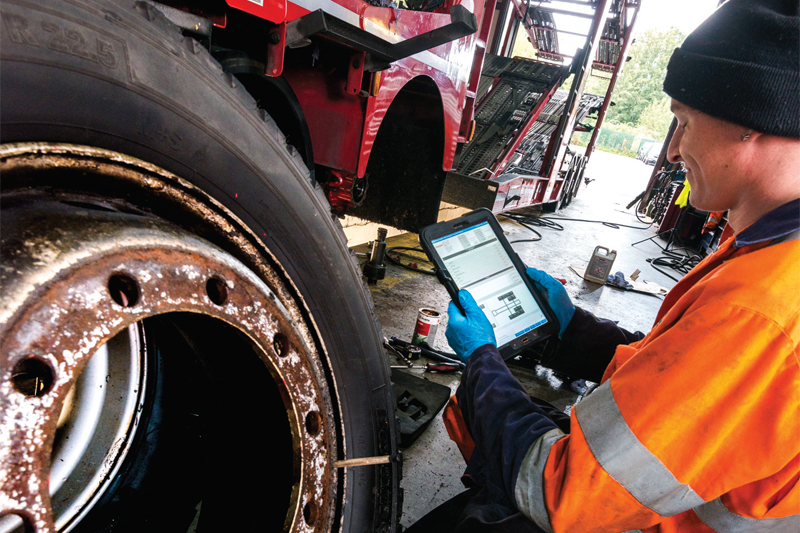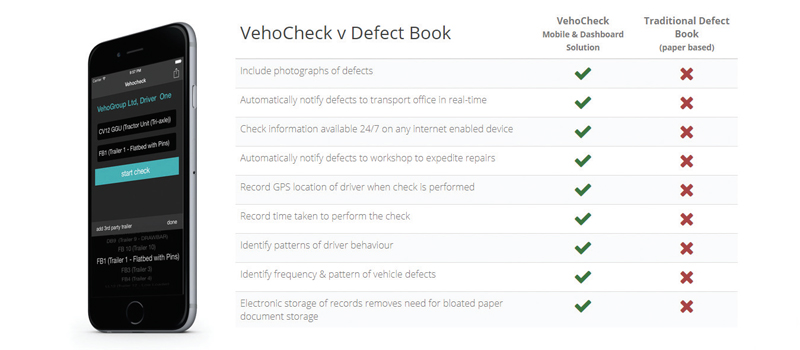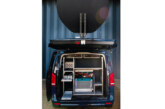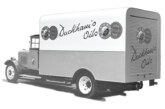
Some sectors of the transport industry have embraced telematics, others have resisted, preferring to rely on tried and tested ways of doing things. Like it or not, both operators and workshops are going to find telematics playing an increasingly important role in their maintenance activities. CVW ’s Consulting Editor, Sharon Clancy reports.
If you’ve always thought that telematics is not relevant to your business, try thinking about the amount of electronic data you already take for granted. Telematics is about obtaining vehicle and operations information via electronic or digital connection, and then using that data for a host of tasks, whether it is improving fleet efficiency or to improve maintenance and compliance.
So, if you are monitoring fuel usage, capturing diagnostic fault codes from your vehicles, or downloading digital tachograph data, then you’re already using telematics data in some shape or form.
At this year’s CV Show, there was strong evidence to suggest that more and more companies are embracing this digital approach to fleet management and compliance. Whatever your reasons are for gathering data, web-based systems have made it easier to integrate the information from various sources into one easily accessible dashboard, and because many are on a subscription or a per-vehicle cost basis, it’s more affordable, too.
Compliance
This trend is partly being driven by the DVSA’s Earned Recognition scheme, which aims to reward the most compliant operators with fewer agency intrusions into their fleet operations. In return, those operators must demonstrate adherence to a strict set of key performance indicators, and they must do so using IT systems approved by the DVSA. This, in turn, has led to many software companies investing in upgrades to their products to integrate all the data input and numerous checks necessary to demonstrate compliance.
However, this level of real-time compliance needn’t be prohibitively expensive. Compliance specialist CheckedSafe, for example, has added Fleet Maintenance and Earned Recognition modules to its defect reporting and management system without adding to the basic cost of £1 per vehicle per day.

“Margins are tight in the transport industry. Adding the Fleet Maintenance and Earned Recognition modules to our current offering seemed logical and beneficial to our clients. The challenge was to retain the price point, and I am delighted to say we achieved that,” commented Darran Harris, Director of CheckedSafe.
Vehicle checks and maintenance logs are digitally stored in a dedicated digital vehicle file. Past and upcoming inspection details, schedules and plans, ad hoc inspections and unplanned inspections are all recorded. The calendar view allows managers to quickly identify all vehicles that are VOR, due a PMI or have any other maintenance scheduled.
A 360° view
Telematics provides the basic data for the connected, integrated compliance regimes many fleets are now adopting. It’s all about joined-up defect reporting, repair scheduling and trend analysis – none of which is possible with paper-based records. The amount of data that can now be captured is huge – but web-based systems can do a lot of the hard work for you, updating vehicle records automatically, flagging up alerts, scheduling workshop time and so on.
Connecting your compliance management systems to your workshop management system provides a 360° and real-time view of compliance and vehicle maintenance. Defects can be tracked from reporting, through to rectification; those repairs can take place at the optimum time to avoid unnecessary downtime while remaining compliant.
Maintenance cost analysis
With more data on vehicle cost collected automatically, vehicle maintenance no longer has to be a slightly unpredictable money pit. Remote monitoring of vehicle CANbus data and fault codes provides real-time visibility of vehicle health and allows workshops to be proactive in managing repairs. There’s no need to wait for the vehicle to come into the workshop before identifying what and how serious a fault is. Non-safety critical defects can wait until the next scheduled inspection, minimising unplanned downtime.
New-generation systems are designed to enable you to analyse vehicle repair costs in more depth by providing the kind of drilled-down cost analysis that used to be prohibitively expensive. It’s now possible to get answers to questions such as; do you know which vehicles are more costly to repair, even when they are on the same type of operation? Are you replacing vehicle parts still under warranty? Are your drivers meeting defect-reporting responsibilities?
Orbcomm, for example, says its telematics platform helps maintenance and workshop engineers to improve vehicle health by providing up-to-date information on status. Driver inspections are sent automatically to maintenance teams for workshop planning; alerts with diagnostic codes can be shared with external maintenance contractors, and a feedback loop clears defects once they have been rectified. Reports can be generated for the maintenance team that include fleet inspection, fault code summaries and maintenance task planning, for analysis as well as identification of common or frequent issues.

VehoCheck’s defect recording and management system also includes integration with workshop systems to give a complete picture of the repair process and compliance situation. Any driver-reported defect automatically creates a job card and workshop schedule for rectification. Defect repair information is recorded in the office-based dashboard, and pushed back to the driver, so they know it has been noted. There are also reports now available that show parts and labour costs. These reports can also include job cost analysis, costs per kilometre and per asset, and defect patterns for any vehicle or group of vehicles. Repair cost analysis includes spikes in vehicle cost against multiple variables.
Smarter vehicle maintenance
Whether you like it or not, workshops are becoming more connected. Truckfile’s workshop management software uses realtime information to help managers monitor the progress of a job, and measure the efficiency of individual technicians and the workshop. Part of this is a new technician app that emulates the process of using paper and pen, but delivers the benefits of a digital system. Technicians can be allocated jobs from the workshop supervisors, or load unallocated jobs onto their device for completion. Digital job sheets must be fully completed by the technician before the job can be ended. If a defect is found, dropdown menus enable the technician to select it automatically, saving the need for a written explanation.
The future
Technology doesn’t stand still. Truckfile is also developing a new voice-activated app where instead of carrying a tablet, the technician will wear a simple, inexpensive headset, to access job sheets and report on work done (pictured left). The company says voice can be 20% more efficient than writing, leading to more inspections per day with the same resources.
Voice-activated apps are growing in popularity and appeal to the tech-savvy, younger generation that the CV industry needs to attract. It also has potential beyond integrating work processes to tasks such as guidance in actual repairs.








